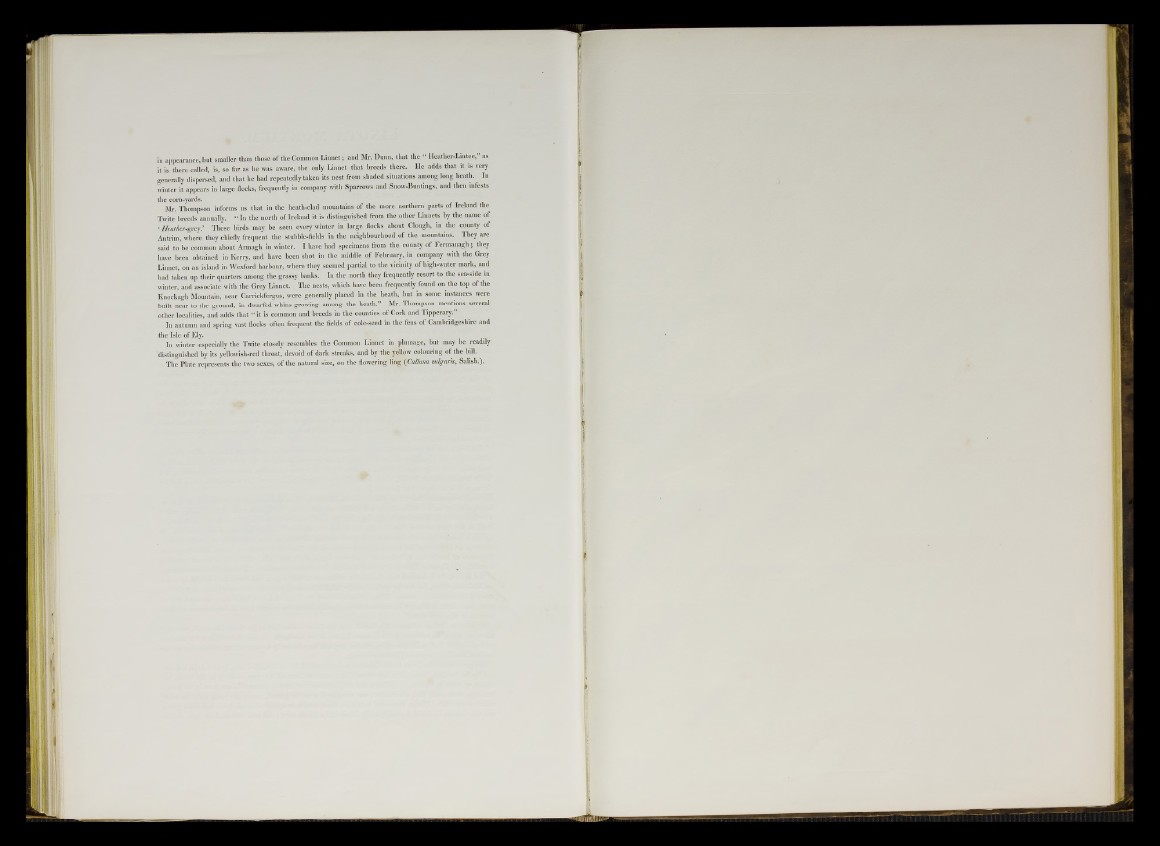
in appearance, but smaller than those of the Common Linnet; and Mr. Dunn, that the “ Hcather-Lintee,’ as
it is there called, is, so far as he was aware, the only Linnet that breeds there. He adds that it is very
generally dispersed, and that he had repeatedly taken its nest from shaded situations among long heath. In
winter it appears in large flocks, frequently in company with Sparrows and Snow-Buntings, and then infests
the corn-yards.
Mr. Thompson informs ns that in the heath-clad mountains of the more northern parts of Ireland the
Twite breeds annually. “ In the north of Ireland it is distinguished from the other Linnets hy the name of
* Heather-gxvy! These hirds may be seen every winter in large docks about Clough, in the county of
Antrim, where they chiedy frequent the stubble-delds in the neighbourhood of the mountains. They are
said to be common about Armagh in winter. I have had specimens from the county of Fermanagh; they
have been obtained in Kerry, and have been shot in the middle of February, in company with the Grey
Linnet, on an island in Wexford harbour, where they seemed partial to the vicinity of high-water mark, and
had taken up their quarters among the grassy banks. In the north they frequently resort to the sea-side in
winter, and associate with the Grey Linnet. The nests, which have been frequently found on the top of the
Iinockagh Mountain, near Carrickfergus, were generally placed in the heath, but in some instances were
built near to the ground, in dwarfed whins growing among the heath.” Mr. Thompson mentions several
other localities, and adds that “ it is common and breeds in the counties of Cork and Tipperary.
In autumn and spring vast flocks often frequent the fields of cole-seed in the fens of Cambridgeshire and
the Isle of Ely.
In winter especially the Twite closely resembles the Common Linnet in plumage, but may be readily
distinguished by its yellowish-red throat, devoid of dark streaks, and by the yellow colouring of the hill.
The Plate represents the two sexes, of the natural size, on the flowering ling (Callrna mlgaris, Salisb.).